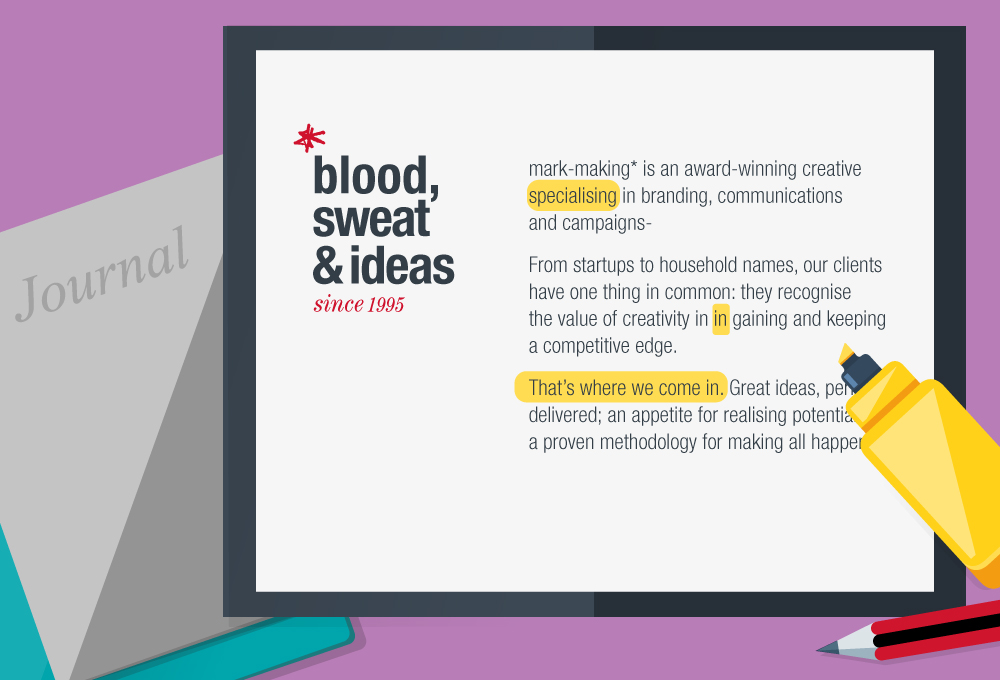What does a proofreader do?

It’s true – we love our jobs. But some parts of the design world are more glamorous than others. This month we’re taking a closer look at the elements of proofreading, an integral part of our deliver process. While we always include proofing in our process, we thought it would be helpful to share our learnings along the way, as it’s probably part of your day-to-day too.
What’s involved in proofing?
What does a proofreader do? The distinction between copy editing and proofreading is often difficult. We feel that ultimately, when asked to proofread something, you are finding and correcting clear errors. This includes things like typos and spelling mistakes. It doesn’t usually include stylistic updates or copy editing, fact checking as ideally this will have been done earlier in the creative process.
The main things to look for when proofing are:
- Typos, spelling, punctuation, grammar – It’s obvious that spelling mistakes must be corrected. Where possible we’ll check variant spellings or hyphenations with the house style guidelines to ensure they’re on-brand. We would usually leave punctuation alone as far as possible, but would query anything that doesn’t seem right.
- House style – Where possible, we always encourage formalising a house style document for your brand so that anyone proofing has a reference point for queries they may have. Typically it includes guidance on how to write dates, times, measurements, reference information and abbreviations. It also should ideally include what should be capitalised and hyphenated etc. It can include a list of frequently used words and other helpful information such as place names or specialist organisation vocabulary.
- Design and typography – We check that the correct font and typography have been used consistently throughout and that appropriate differentiations have been included with headings etc. Also, within the final design checks, we will look at things like paragraph indentations, bad word breaks and widow lines. It’s also important to check that any tables, figures and imagery are on the right pages where they are mentioned in the copy, and are referenced correctly.
- General consistency – A general check across all elements is key. Depending on what you’re proofing, these include:
- Page numbers
- Headers and footers
- Captions on illustrations
- Consistency in numbering paragraphs, bullet points etc.
- Does it make sense? – If we’re not sure what something means, we’ll always ask. We’d only suggest a correction if we’re clear on what is meant.
Proofing takes time depending on what’s being proofed, (like the length of a proofed document). The jury’s out on the ‘best way’ to proof. It really is down to personal preference and whatever gets the job done. Increasingly, due to the nature of how our work is done, we are proofing pdf documents and marking up within the doc. Keep an eye on the blog in the coming weeks for a post devoted to the finer points of marking up in Adobe Acrobat.
A few general mm* team recommendations are:
- Give yourself time, ideally where you won’t be interrupted.
- If proofing on print, use a ruler to guide you across the text. If proofing online, highlight the text you are proofing.
- Some people like to proof in stages, so each time they check the document – they are looking for different elements e.g. first proof: typos/spelling, second proof: design/typography, third proof: captions.
- In general, don’t start proofing the document until it has had final approval from all stakeholders involved.
–
Written by Emily Wright
About markmaking*
markmaking*